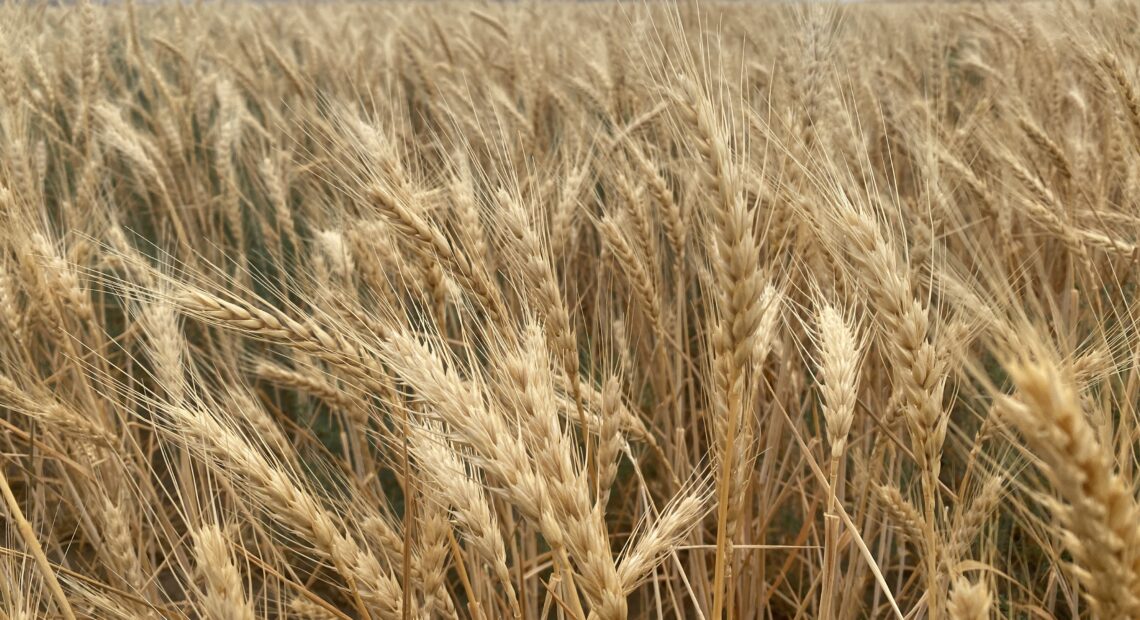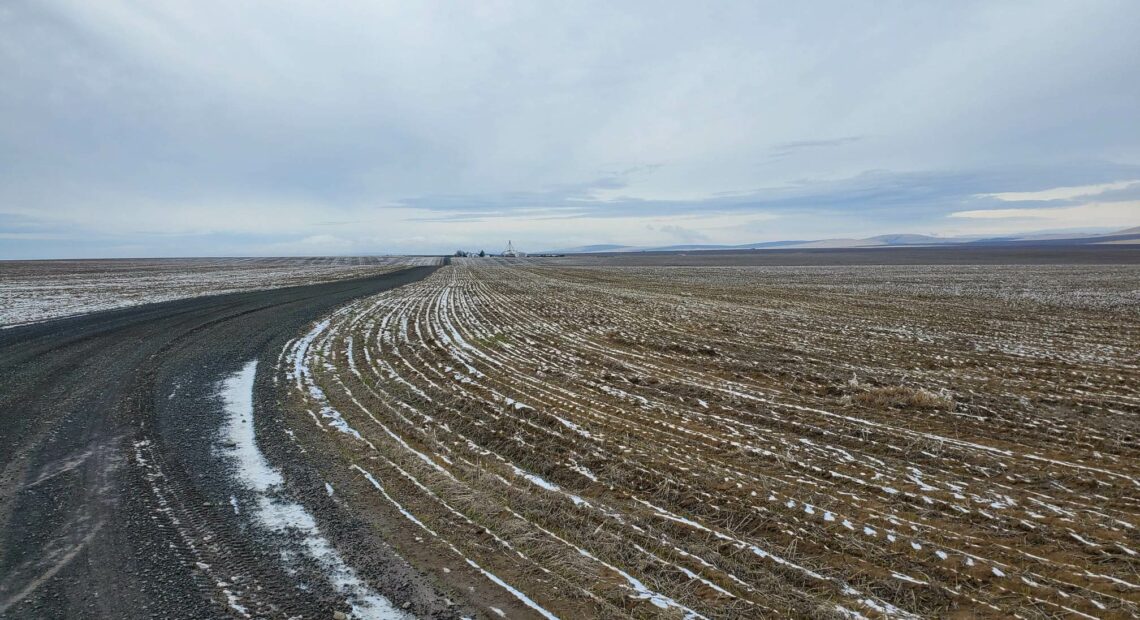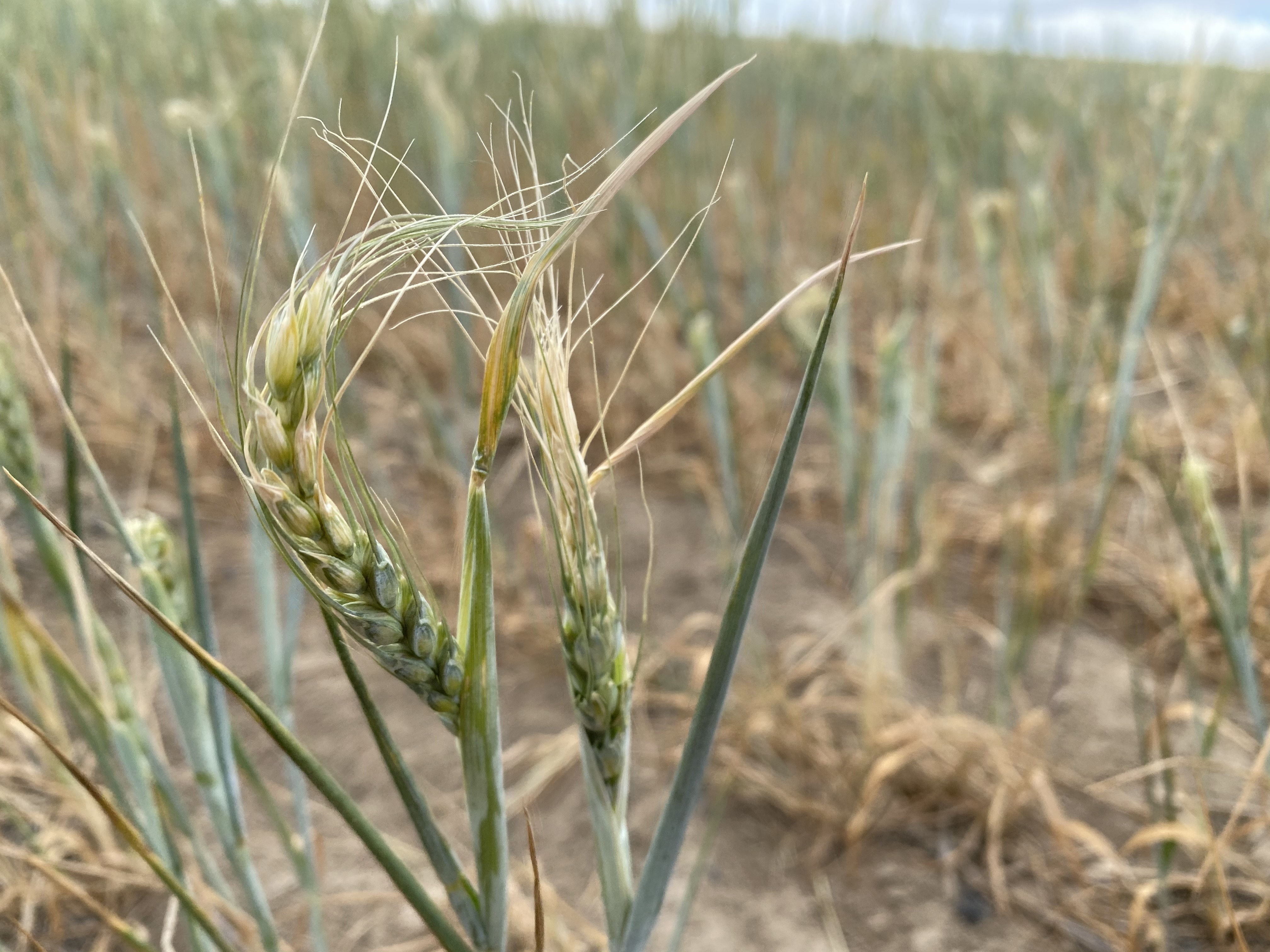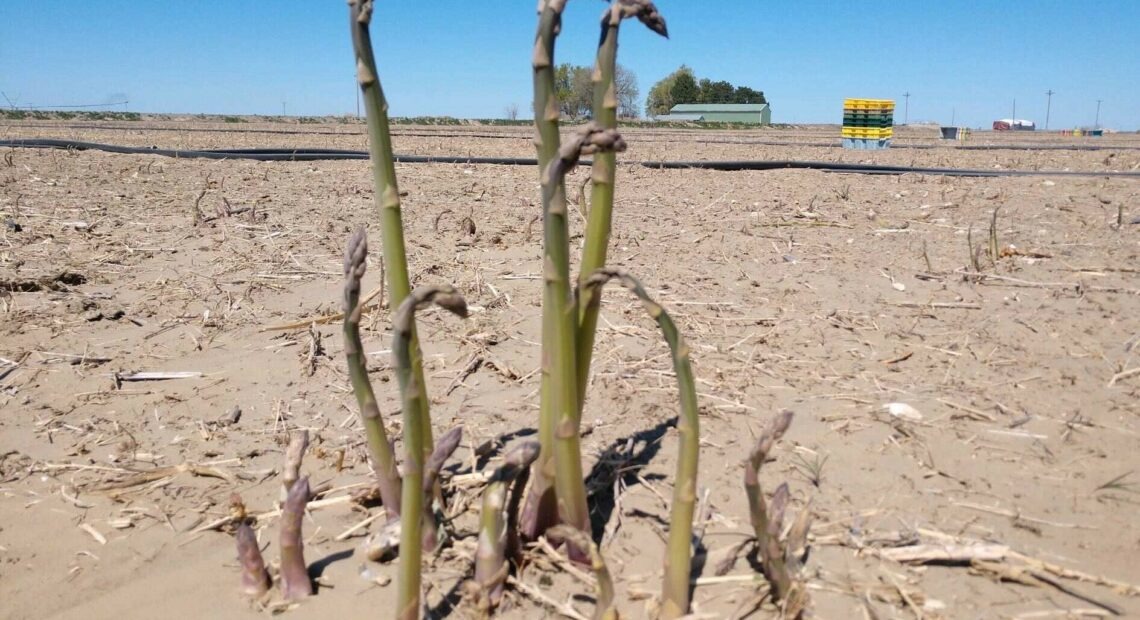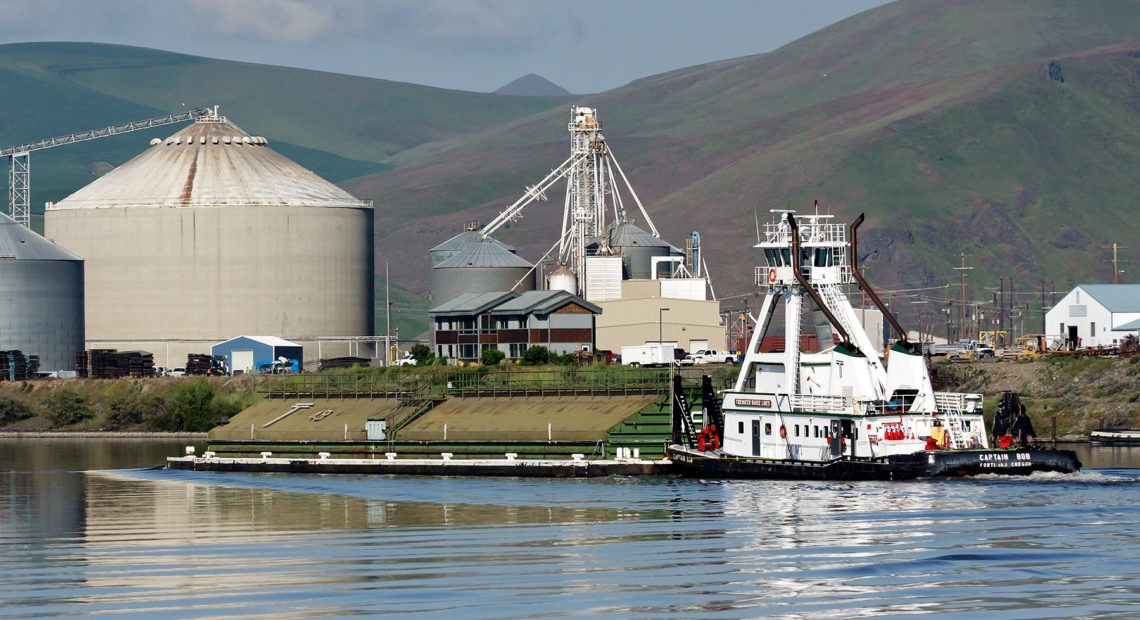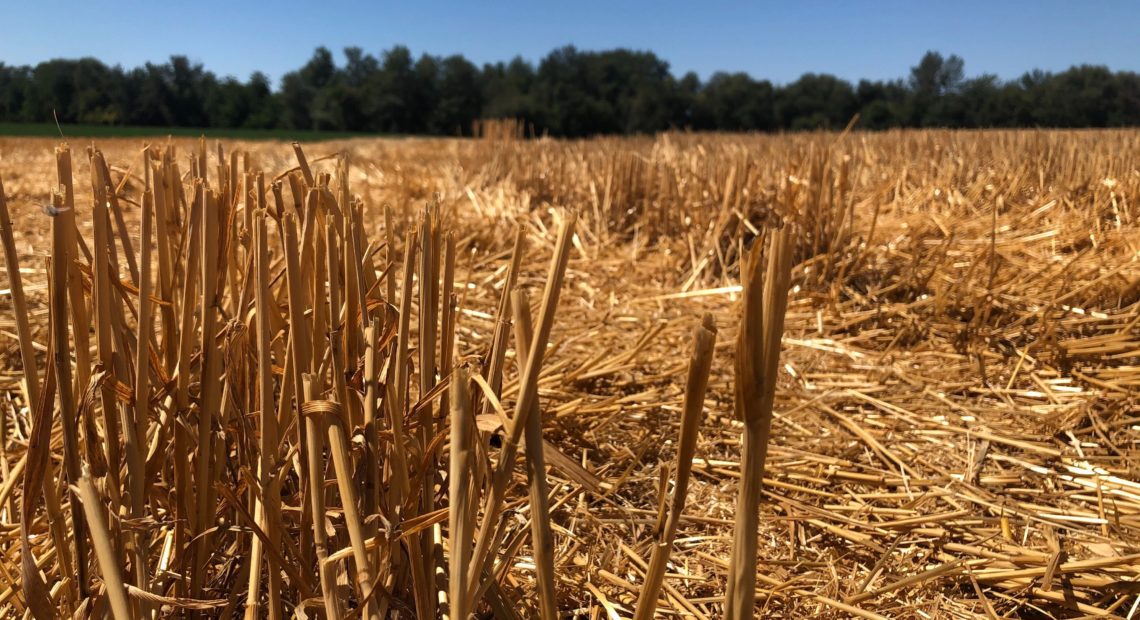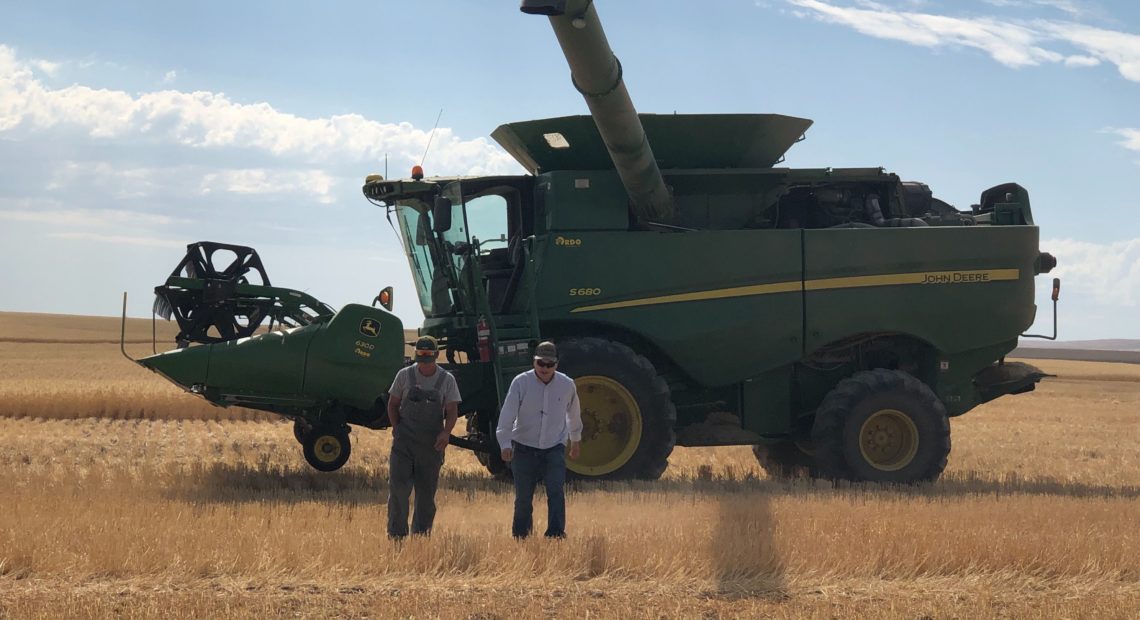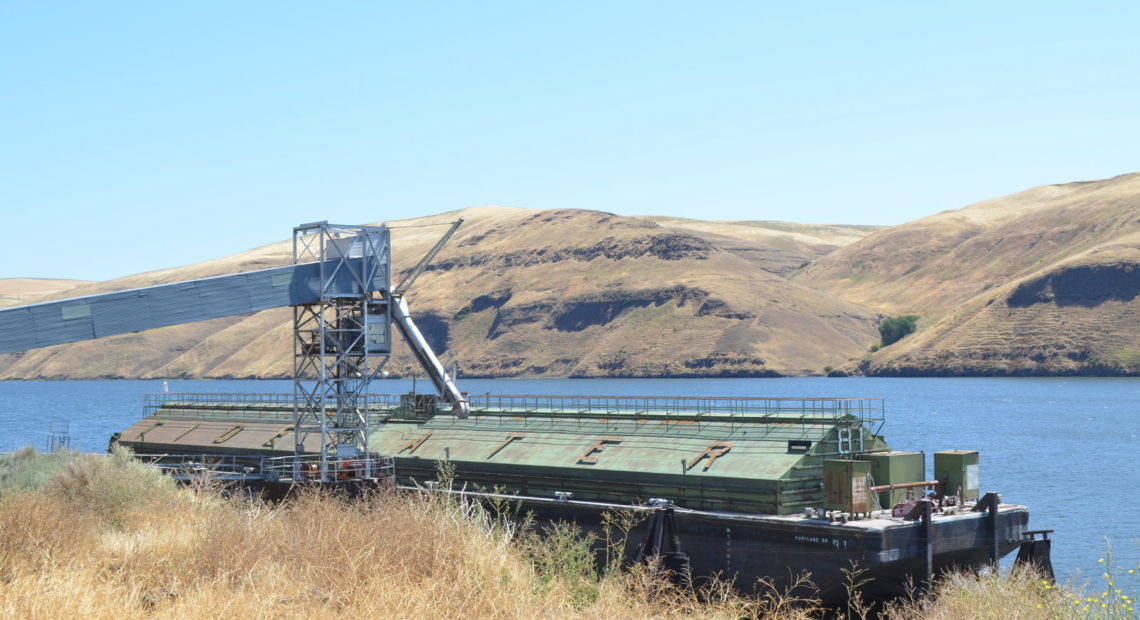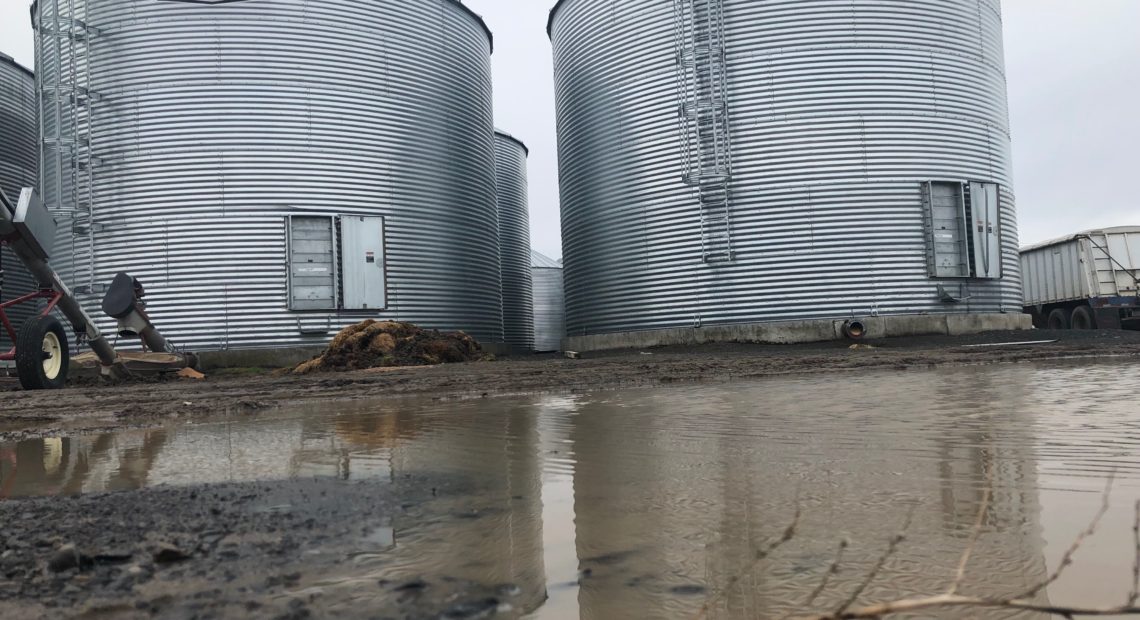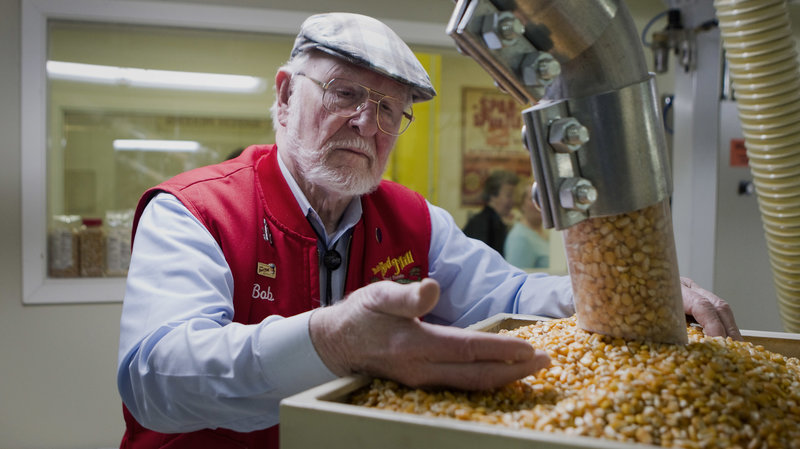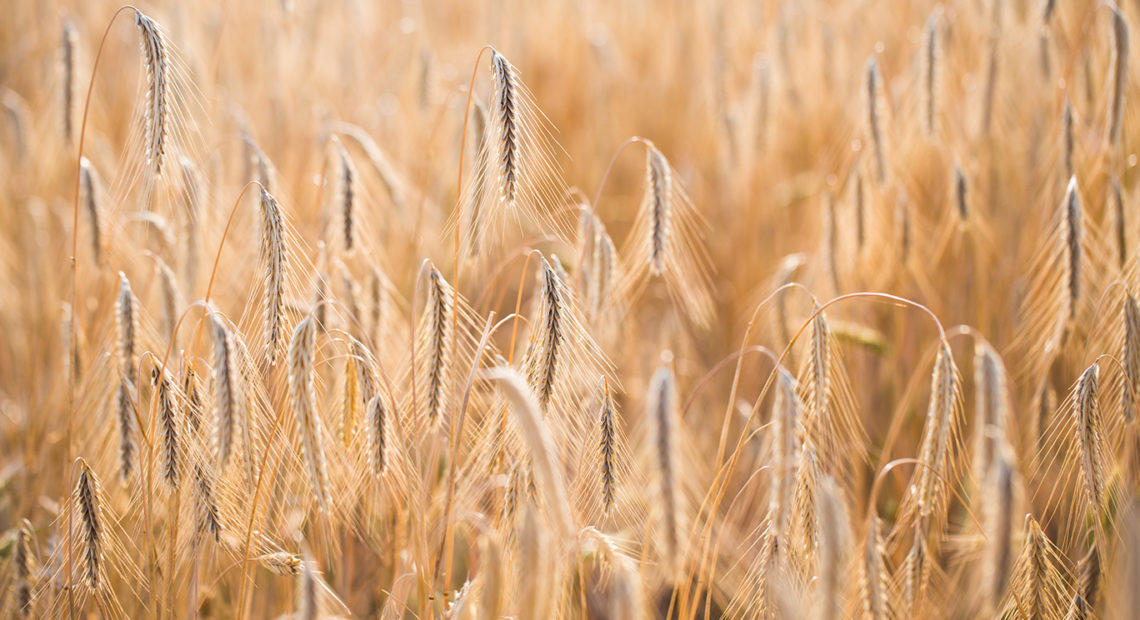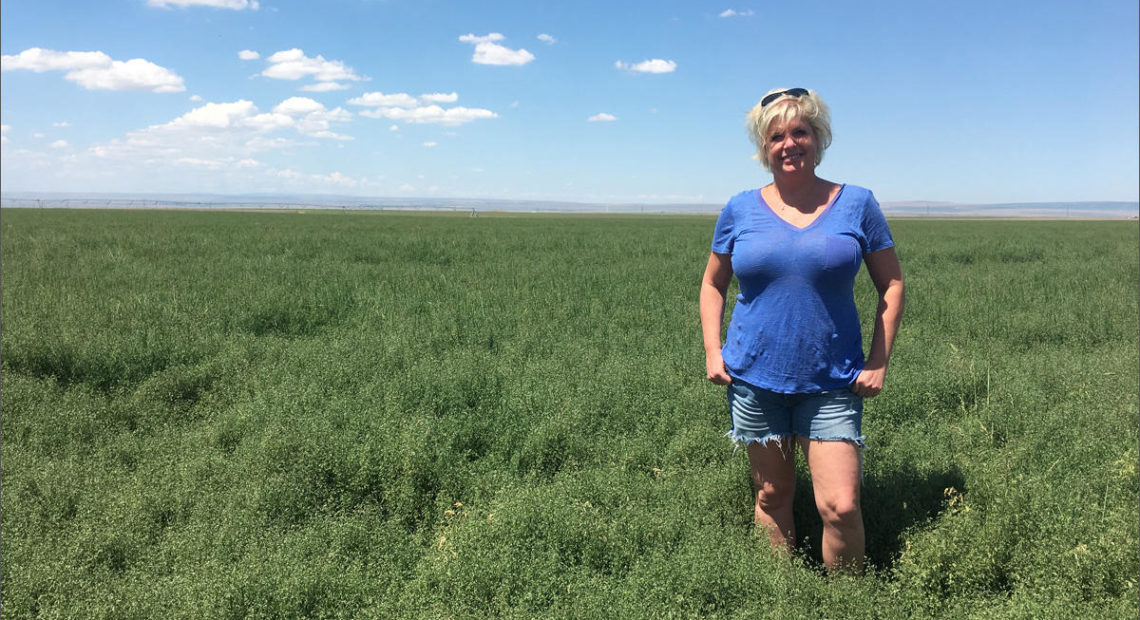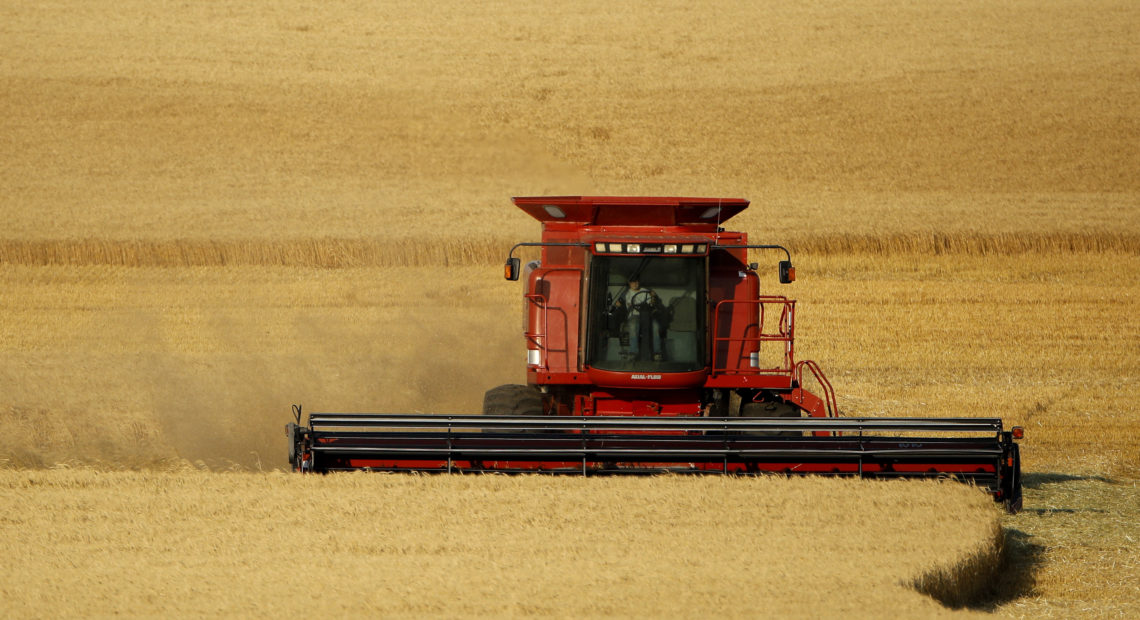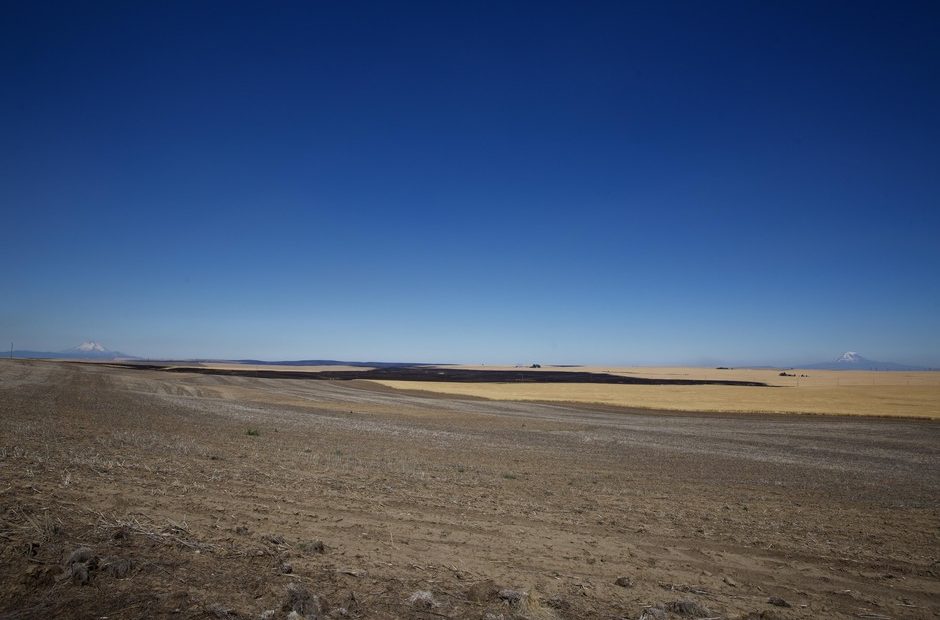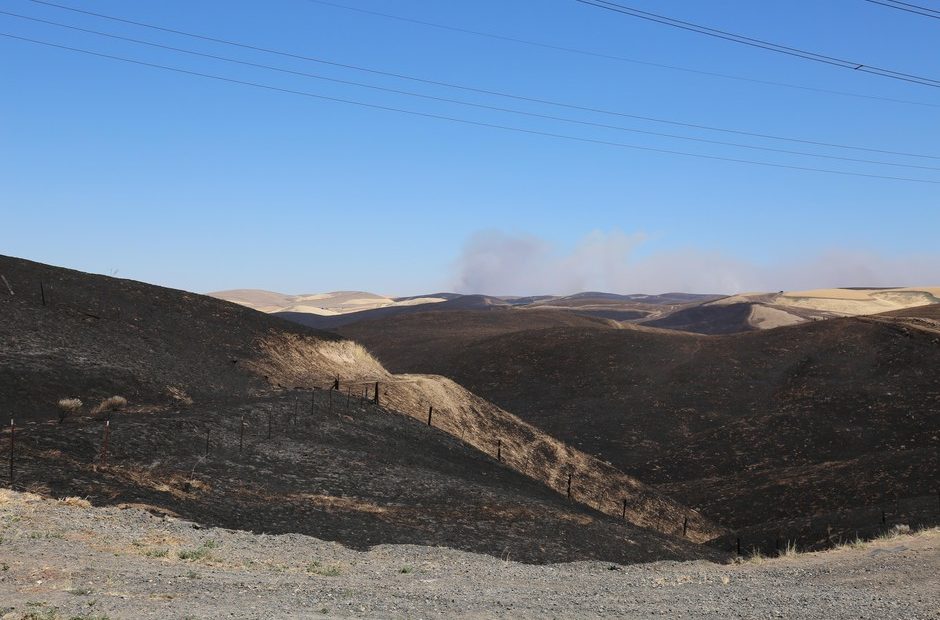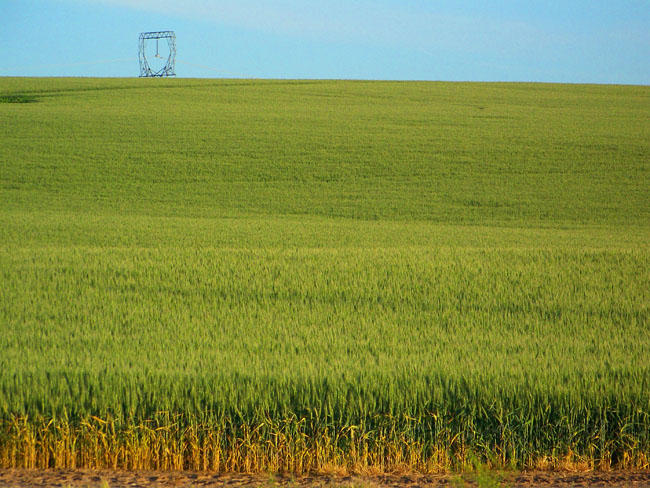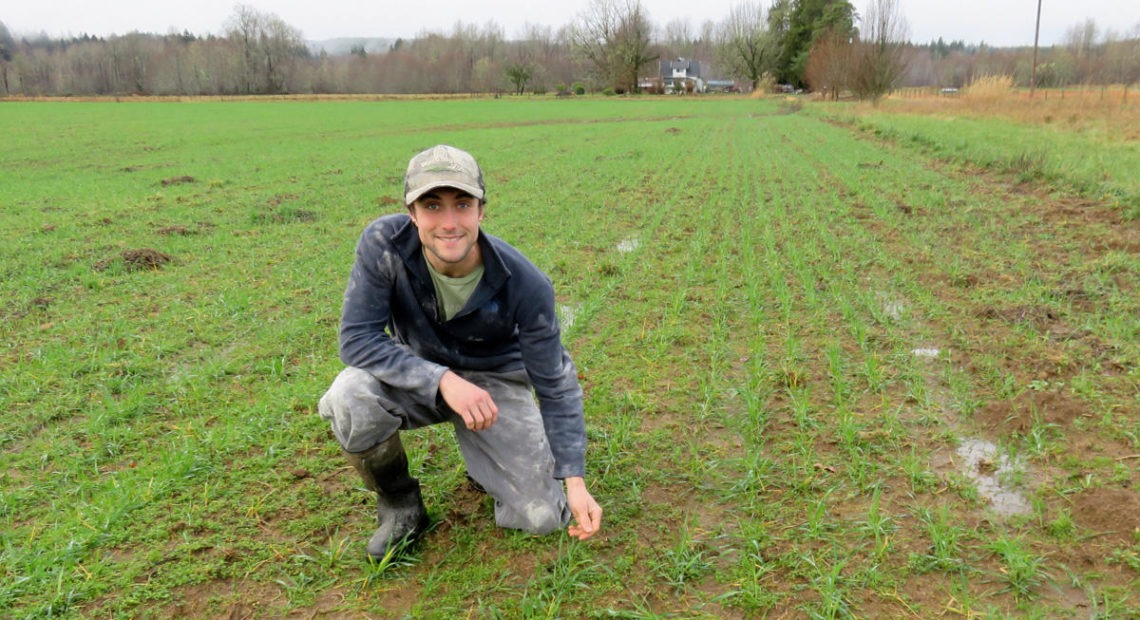A field of wheat stands straight up and lovely just uphill from the Snake River outside of Windust, Washington – but tall standing wheat can also mean that the heads […]Read More
Driving a long gravel road on a tour of the Horse Heaven Hills. Fallow fields and wheat with mountains in the distance. (Credit: Dori Luzzo Gilmour / NWPB) Listen (Runtime […]Read More
Northwest farmers are pouring on the water to moisten soils ahead of the triple-digit temperatures and possible record highs expected this weekend. Read More
Some stunted wheat fields won’t see the combine this summer. Cattle operators are severely cutting back their herds for lack of grass. Little moisture since February in wide swaths of the Northwest is to blame. And drought is deepening across the West, with federal drought maps showing massive and growing areas of red.Read More
Much of the Northwest’s high country is still deep in good snowpack but short on rain this spring. That has dryland wheat farmers and cattle ranchers fretting. Cold, wind and dust are even wreaking havoc with produce farmers in the region.Read More
A lot of freshly harvested wheat bound for Portland, Oregon, could stack up on the Columbia River system soon because an old guy wire has snapped on the Snake River’s Lower Monumental Dam. Read More
The latest harvest estimates say Washington ranchers will harvest nearly 153 million bushels of wheat and Oregon 44 million bushels. That’s around average for both states. A typical barge holds around 122,500 bushels of wheat — meaning 44 million bushels would be about 360 barges full of grain on the Snake and Columbia Rivers heading toward export terminals.Read More
A critical navigation lock on the lower Columbia River is expected to reopen this weekend, between 10 PM Friday and 10 AM Saturday, according to the U.S. Army Corps of Engineers. Read More
The Northwest’s soft white wheat harvest is in full swing, but that grain is going nowhere fast. That’s because of an emergency repair to a lock at Bonneville Dam on the Lower Columbia River.Read More
Right now, Northwest wheat farmers are wrapping up their harvest in many areas. But across the country, farmers are losing money on every load of that golden grain. Read More
Washington's Snake River dams are important to wheat farmers.The state's wheat crop brings $700 million into the state's economy, more than any crop except apples. The vast majority of that wheat gets exported, most of it to Asia.Read More
Several major crops in Oregon and Washington are significantly delayed from foul winter weather and a cool spring. Wheat farmers are having trouble planting in the wet ground. Potatoes are still being planted a month late. And fruit tree buds are developing slowly.Read More
Bob Moore, the 90-year-old founder of Bob's Red Mill, was just a few years into the business of milling whole grains at a converted animal feed mill in a Portland, Ore., suburb when he got a visit from some gluten-free Seattlites who'd come down with a business proposition: Use his business contacts to help them buy bulk xantham gum, an ingredient used in gluten-free Read More
State farmers lack market reports, data, loan services,Read More
Northwest farmers are anxiously watching Washington, D.C.’s lame duck session to see if a Farm Bill will be passed before the New Year. Read More
The new trade agreement signed Sunday at midnight called the USMCA short for the U.S. Mexico, Canada Agreement by the Trump Administration, could change things on some Northwest farms. Farmers are hopeful this new agreement will lift their commodity prices -- many of which are low right now. Read More
Climate change might lead to bigger populations of hungrier insects. This could have serious consequences for grain-growing regions in the Northwest and across the world.Read More
East of The Dalles, Oregon, the Substation Fire has charred over 50,000 acres and is still spreading. A lot of that charred ground so far is golden, soft white wheat. And when grain burns, farmers can lose a lot of money – even if they have crop insurance.Read More
East of the Cascades, wheat farmers say there has been plenty of moisture over the winter and all things point to a good harvest. But the price and demand for that crop is very much in question.Read More
Nowadays the vast fields of grain in eastern Washington, northeastern Oregon, and north Idaho feed the world. But once upon a time—1825 to be exact—the first crop of wheat in the Northwest was planted at Fort Vancouver.Read More

